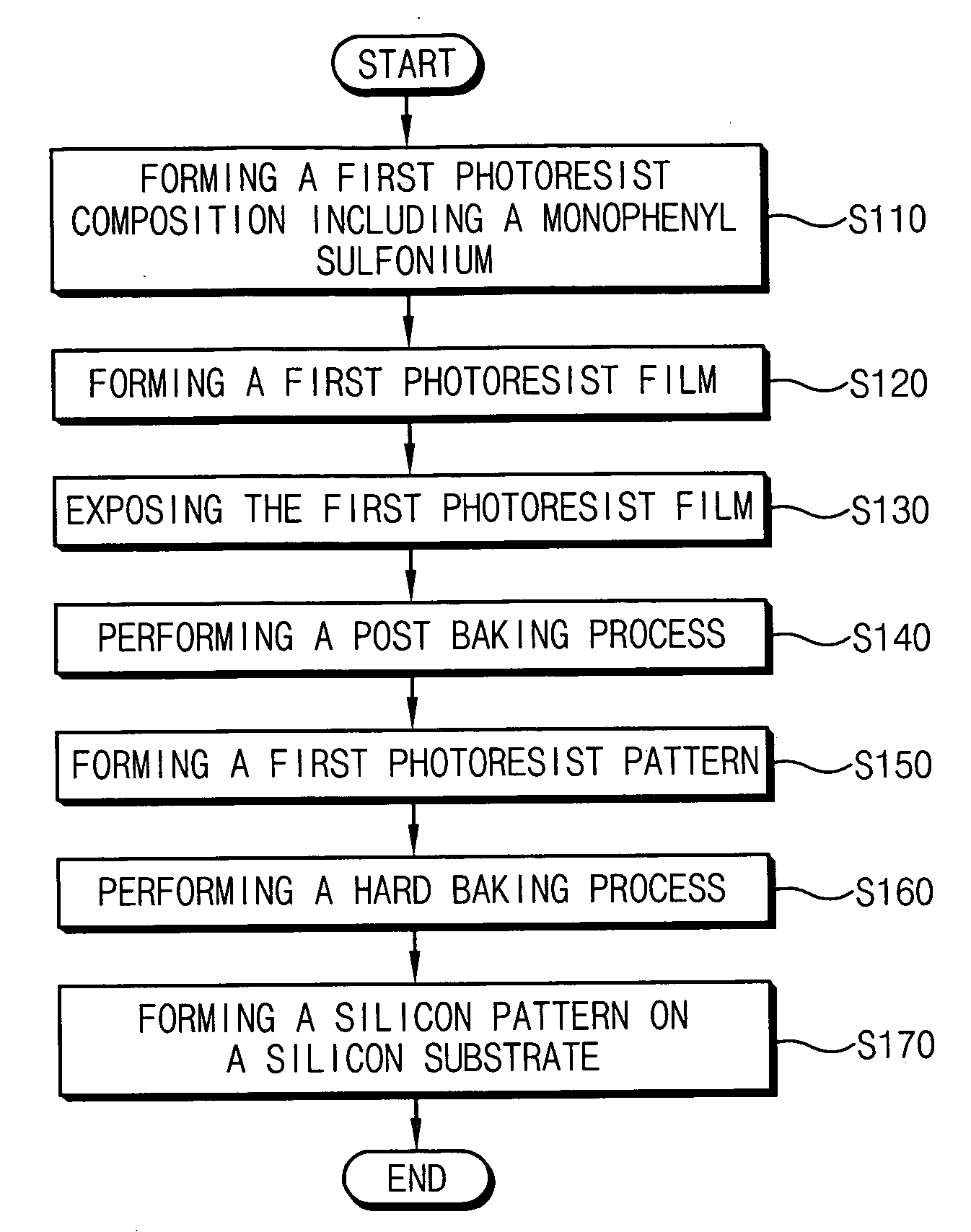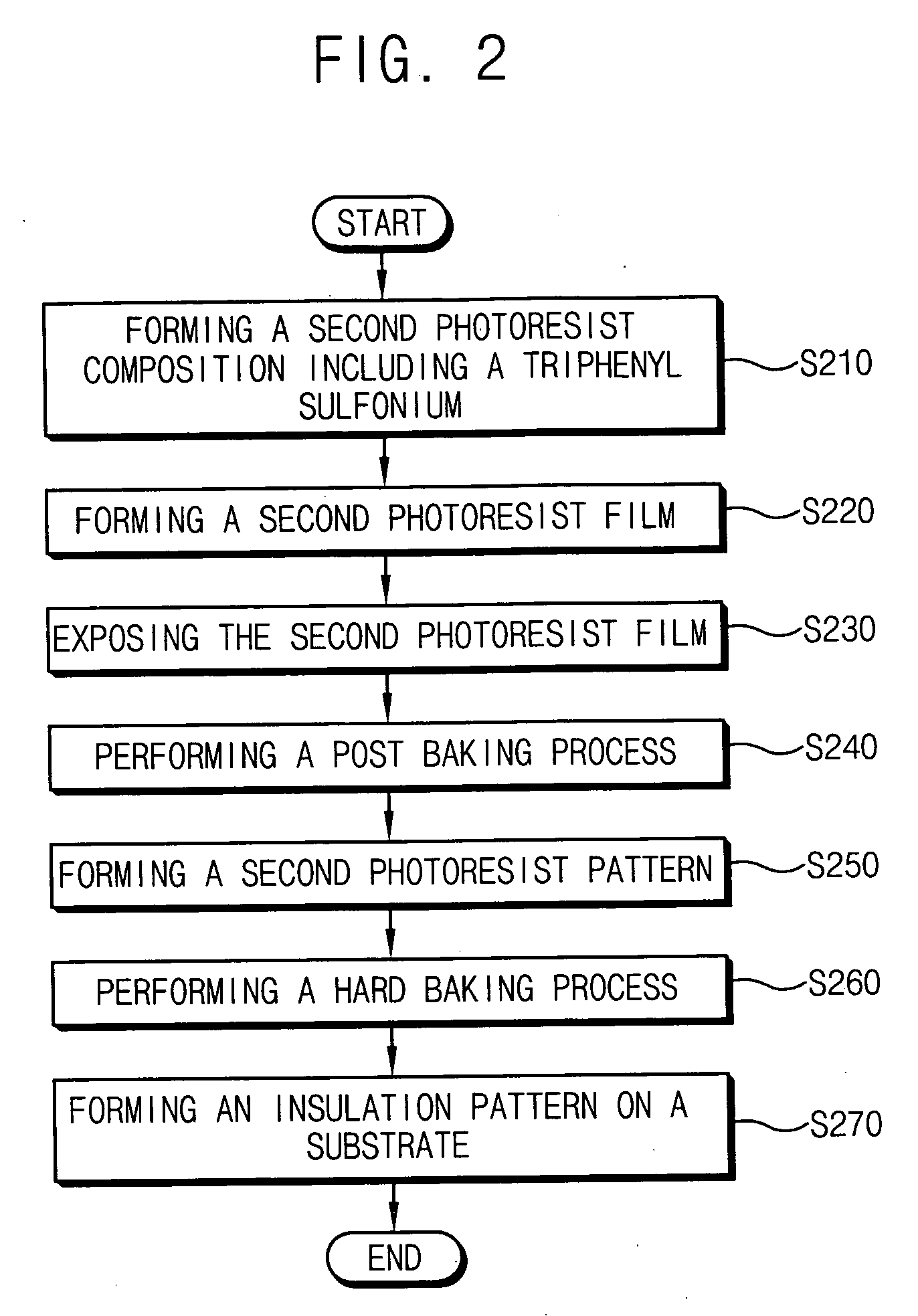Photoresist composition and method of forming a pattern using same
a composition and composition technology, applied in the field of photoresist composition, can solve the problems of design rule, insatisfactory photoresist pattern profile, more frequent exposing failures, etc., and achieve the effect of sufficiently preventing footing phenomenon and top loss of a pattern, and remarkably preventing poor profile of a photoresist pattern due to a standing wav
- Summary
- Abstract
- Description
- Claims
- Application Information
AI Technical Summary
Benefits of technology
Problems solved by technology
Method used
Image
Examples
example 1
[0091] A methacrylate resin of about 50 weight parts, a quencher of about 10 weight parts, a PAG of about 25 weight parts and a solvent of about 915 weight parts were mixed with one another to thereby form a first solution. The PAG comprised a monophenyl sulfonium. The first solution was filtered through a membrane filter of about 0.2 μm, to thereby obtain a first photoresist composition that was coated on a silicon substrate including an anti-reflection layer and sensitive to an ArF excimer laser.
example 2
[0092] A methacrylate resin of about 50 weight parts, a quencher of about 10 weight parts, a PAG of about 25 weight parts and a solvent of about 915 weight parts were mixed with one another to thereby form a second solution. The PAG comprised a triphenyl sulfonium. The second solution was filtered through a membrane filter of about 0.21 μm, to thereby obtain a second photoresist composition that was coated on a BPSG layer and sensitive to an ArF excimer laser. The BPSG layer was formed on a silicon substrate including the anti-reflection layer.
example 3
[0093] A methacrylate resin of about 50 weight parts, a quencher of about 10 weight parts, a PAG of about 25 weight parts and a solvent of about 915 weight parts were mixed with one another to thereby form a third solution. The PAG comprised a first mixture of a monophenyl sulfonium and a triphenyl sulfonium. A weight ratio between the monophenyl sulfonium and the triphenyl sulfonium was about 1:3 in the first mixture. The third solution was filtered through a membrane filter of about 0.2 μm, to thereby obtain a third photoresist composition that was coated on a polysilicon layer and sensitive to an ArF excimer laser. The polysilicon layer was formed on a silicon substrate including the anti-reflection layer.
PUM
 Login to View More
Login to View More Abstract
Description
Claims
Application Information
 Login to View More
Login to View More - R&D
- Intellectual Property
- Life Sciences
- Materials
- Tech Scout
- Unparalleled Data Quality
- Higher Quality Content
- 60% Fewer Hallucinations
Browse by: Latest US Patents, China's latest patents, Technical Efficacy Thesaurus, Application Domain, Technology Topic, Popular Technical Reports.
© 2025 PatSnap. All rights reserved.Legal|Privacy policy|Modern Slavery Act Transparency Statement|Sitemap|About US| Contact US: help@patsnap.com



